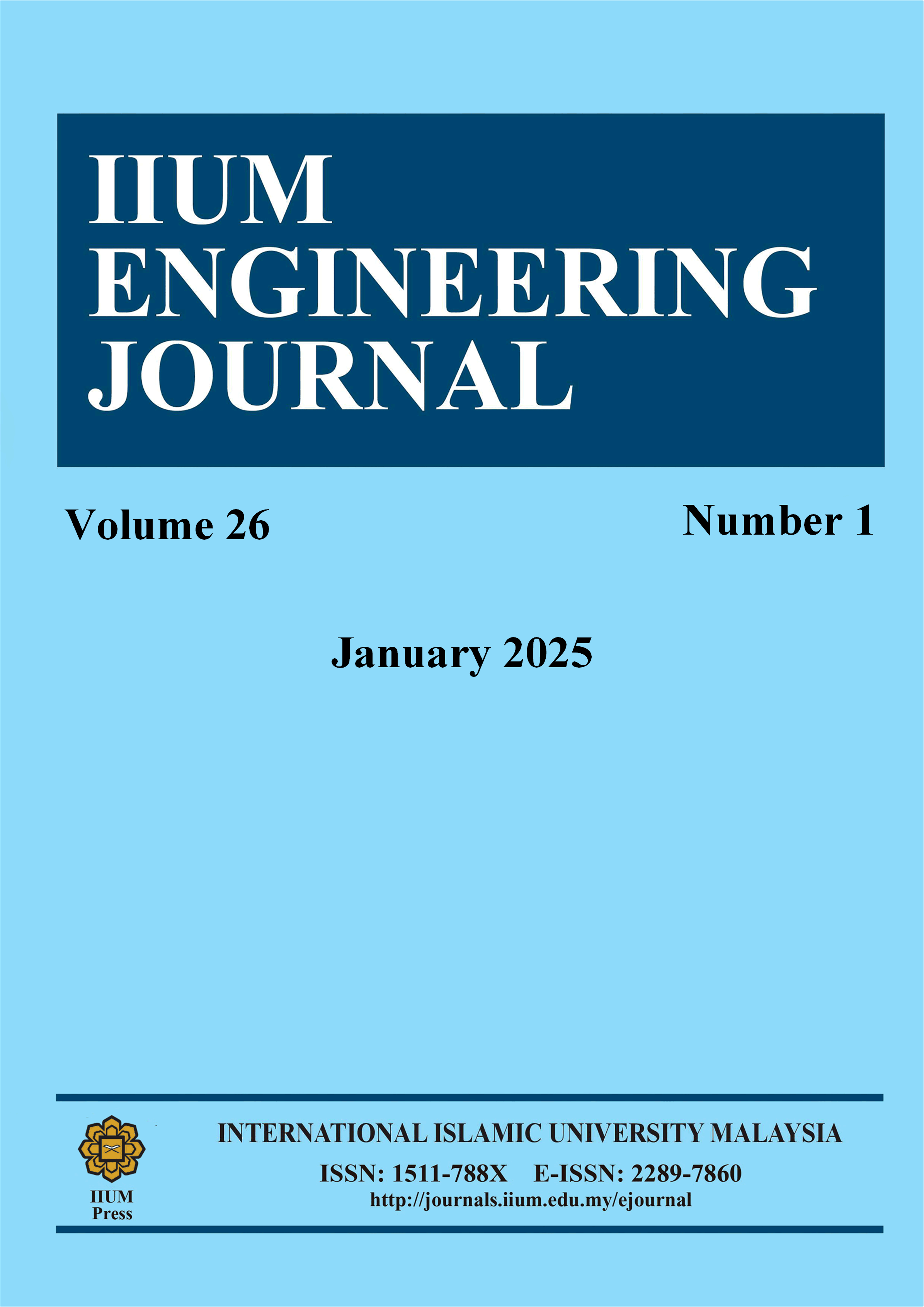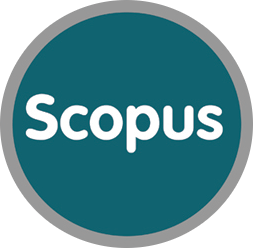Bilateral Ground Reaction Force Prediction Using Deep Learning Models and Custom Force Plate
DOI:
https://doi.org/10.31436/iiumej.v26i1.3379Keywords:
Force plate, Deep learning model, Ground reaction force, Prediction, ValidationAbstract
Several low-cost force plates have been proposed as alternatives for laboratory-grade force plates. Nevertheless, the inability to quantify bilateral ground reaction force (GRF) prevents these inexpensive force plates from being used for biomechanical analysis and certain clinical metric acquisition. This study developed deep-learning models, such as autoencoder and U-net, to predict bilateral GRF from vertical GRF measured using a low-cost custom force plate during sit-to-stand, gait initialization, and gait. Results indicated that the U-net model, which utilized STFT vertical GRF as input, performed the best. In addition to predicting the mediolateral GRF measured during sit-to-stand, the model accurately predicted the anterior-posterior and mediolateral GRF for sit-to-stand, gait initialization, and gait in the test dataset, achieving high Pearson's correlation coefficient, coefficient of determination, and intraclass correlation coefficient values of over 0.90, 0.79, and 0.89, respectively. The model demonstrated a higher Pearson's correlation coefficient compared to three related previous studies that utilized different methods to predict anterior-posterior GRF and six studies in inferring mediolateral GRF. The results demonstrated the potential of TFU and custom force plate as a GRF measurement tool to perform bio-mechanical analysis.
ABSTRAK: Beberapa plat daya kos rendah telah dicadangkan sebagai alternatif kepada plat daya berkualiti makmal. Walau bagaimanapun, ketidakmampuan untuk mengukur daya reaksi tanah (GRF) secara bilateral menghalang plat daya yang murah ini daripada digunakan untuk analisis biomekanik dan pengambilan metrik klinikal tertentu. Kajian ini membangunkan model pembelajaran mendalam, seperti autoencoder dan U-net, untuk meramalkan GRF bilateral daripada GRF menegak yang diukur menggunakan plat daya khas kos rendah semasa pergerakan duduk-ke-berdiri, permulaan berjalan, dan berjalan. Hasil menunjukkan bahawa model U-net, yang menggunakan GRF menegak STFT sebagai input, memberikan prestasi terbaik. Selain meramalkan GRF mediolateral yang diukur semasa duduk-ke-berdiri, model ini juga meramalkan dengan tepat GRF anterior-posterior dan mediolateral untuk duduk-ke-berdiri, permulaan berjalan, dan berjalan dalam set data ujian, mencapai nilai koefisien korelasi Pearson, koefisien penentuan, dan koefisien korelasi intrakelas yang tinggi melebihi 0.90, 0.79, dan 0.89, masing-masing. Model ini menunjukkan koefisien korelasi Pearson yang lebih tinggi berbanding tiga kajian terdahulu yang berkaitan yang menggunakan kaedah berbeza untuk meramalkan GRF anterior-posterior dan enam kajian dalam menyimpulkan GRF mediolateral. Hasil kajian menunjukkan potensi TFU dan plat daya khas sebagai alat pengukuran GRF untuk melakukan analisis biomekanik.
Downloads
Metrics
References
Fluit, R., Andersen, M.S., Kolk, S., Verdonschot, N., Koopman, H.F. (2014). Prediction of ground reaction forces and moments during various activities of daily living. J Biomech, 47(10):2321-2329.10.1016/j.jbiomech.2014.04.030. DOI: https://doi.org/10.1016/j.jbiomech.2014.04.030
Jung, Y., Jung, M., Ryu, J., Yoon, S., Park, S.K., Koo, S. (2016). Dynamically adjustable foot-ground contact model to estimate ground reaction force during walking and running. Gait Posture, 45:62-68.10.1016/j.gaitpost.2016.01.005. DOI: https://doi.org/10.1016/j.gaitpost.2016.01.005
Oh, S.E., Choi, A., Mun, J.H. (2013). Prediction of ground reaction forces during gait based on kinematics and a neural network model. J Biomech, 46(14):2372-2380.10.1016/j.jbiomech.2013.07.036. DOI: https://doi.org/10.1016/j.jbiomech.2013.07.036
Refai, M.I.M., Beijnum, B.J.F.v., Buurke, J.H., Veltink, P.H. (2020). Portable Gait Lab: Estimating 3D GRF Using a Pelvis IMU in a Foot IMU Defined Frame. IEEE Transactions on Neural Systems and Rehabilitation Engineering, 28(6):1308-1316.10.1109/TNSRE.2020.2984809. DOI: https://doi.org/10.1109/TNSRE.2020.2984809
Karatsidis, A., Jung, M., Schepers, H.M., Bellusci, G., de Zee, M., Veltink, P.H., et al. (2019). Musculoskeletal model-based inverse dynamic analysis under ambulatory conditions using inertial motion capture. Med Eng Phys, 65:68-77.https://doi.org/10.1016/j.medengphy.2018.12.021. DOI: https://doi.org/10.1016/j.medengphy.2018.12.021
Leporace, G., Batista, L., Nadal, J. (2018). Prediction of 3D ground reaction forces during gait based on accelerometer data. Research on Biomedical Engineering, 34.10.1590/2446-4740.06817. DOI: https://doi.org/10.1590/2446-4740.06817
Faber, G.S., Chang, C.C., Kingma, I., Dennerlein, J.T., van Dieën, J.H. (2016). Estimating 3D L5/S1 moments and ground reaction forces during trunk bending using a full-body ambulatory inertial motion capture system. J Biomech, 49(6):904-912.10.1016/j.jbiomech.2015.11.042. DOI: https://doi.org/10.1016/j.jbiomech.2015.11.042
Sim, T., Kwon, H., Oh, S.E., Joo, S.B., Choi, A., Heo, H.M., et al. (2015). Predicting Complete Ground Reaction Forces and Moments During Gait With Insole Plantar Pressure Information Using a Wavelet Neural Network. J Biomech Eng, 137(9).10.1115/1.4030892. DOI: https://doi.org/10.1115/1.4030892
Jacobs, D.A., Ferris, D.P. (2015). Estimation of ground reaction forces and ankle moment with multiple, low-cost sensors. J Neuroeng Rehabil, 12:90.10.1186/s12984-015-0081-x. DOI: https://doi.org/10.1186/s12984-015-0081-x
Jung, Y., Jung, M., Lee, K., Koo, S. (2014). Ground reaction force estimation using an insole-type pressure mat and joint kinematics during walking. J Biomech, 47(11):2693-2699.10.1016/j.jbiomech.2014.05.007. DOI: https://doi.org/10.1016/j.jbiomech.2014.05.007
Abujaber, S., Gillispie, G., Marmon, A., Zeni, J., Jr. (2015). Validity of the Nintendo Wii Balance Board to assess weight bearing asymmetry during sit-to-stand and return-to-sit task. Gait Posture, 41(2):676-682.10.1016/j.gaitpost.2015.01.023. DOI: https://doi.org/10.1016/j.gaitpost.2015.01.023
Yamako, G., Chosa, E., Totoribe, K., Fukao, Y., Deng, G. (2017). Quantification of the sit-to-stand movement for monitoring age-related motor deterioration using the Nintendo Wii Balance Board. PLoS One, 12(11):e0188165.10.1371/journal.pone.0188165. DOI: https://doi.org/10.1371/journal.pone.0188165
Arifin, W.N. (2018). A Web-based Sample Size Calculator for Reliability Studies. 10:67-76.10.21315/eimj2018.10.3.8. DOI: https://doi.org/10.21315/eimj2018.10.3.8
Onuma, R., Masuda, T., Hoshi, F., Matsuda, T., Sakai, T., Okawa, A., et al. (2021). Measurements of the centre of pressure of individual legs reveal new characteristics of reduced anticipatory postural adjustments during gait initiation in patients with post-stroke hemiplegia. J Rehabil Med, 53(7):jrm00211.10.2340/16501977-2856. DOI: https://doi.org/10.2340/16501977-2856
Eltoukhy, M., Kuenze, C., Andersen, M.S., Oh, J., Signorile, J. (2017). Prediction of ground reaction forces for Parkinson's disease patients using a kinect-driven musculoskeletal gait analysis model. Med Eng Phys, 50:75-82.10.1016/j.medengphy.2017.10.004. DOI: https://doi.org/10.1016/j.medengphy.2017.10.004
Izhar, C., Zakaria, H., Maruzuki, M., Sulaiman, M., Rahim, A. (2021). Gait cycle prediction model based on gait kinematic using machine learning technique for assistive rehabilitation device. IAES International Journal of Artificial Intelligence (IJ-AI), 10:752.10.11591/ijai.v10.i3.pp752-763. DOI: https://doi.org/10.11591/ijai.v10.i3.pp752-763
Vittinghoff, E., McCulloch, C.E. (2007). Relaxing the rule of ten events per variable in logistic and Cox regression. Am J Epidemiol, 165(6):710-718.10.1093/aje/kwk052. DOI: https://doi.org/10.1093/aje/kwk052
Bank, D., Koenigstein, N., Giryes, R. (2020). Autoencoders. arXiv preprint arXiv:2003.05991.
Ronneberger, O., Fischer, P., Brox, T. (2015). U-Net: Convolutional Networks for Biomedical Image Segmentation. In Proceedings of Medical Image Computing and Computer-Assisted Intervention – MICCAI 2015: 5-9 October 2015;Cham; pp 234-241. DOI: https://doi.org/10.1007/978-3-319-24574-4_28
Yu, S., Príncipe, J.C. (2019). Understanding autoencoders with information theoretic concepts. Neural Networks, 117:104-123.https://doi.org/10.1016/j.neunet.2019.05.003. DOI: https://doi.org/10.1016/j.neunet.2019.05.003
Gu, J., Wang, Z., Kuen, J., Ma, L., Shahroudy, A., Shuai, B., et al. (2018). Recent advances in convolutional neural networks. Pattern Recognition, 77:354-377.https://doi.org/10.1016/j.patcog.2017.10.013. DOI: https://doi.org/10.1016/j.patcog.2017.10.013
Lee, M. (2023). Mathematical Analysis and Performance Evaluation of the GELU Activation Function in Deep Learning. Journal of Mathematics, 2023(1):4229924.https://doi.org/10.1155/2023/4229924. DOI: https://doi.org/10.1155/2023/4229924
Mu, R., Zeng, X. (2019). A Review of Deep Learning Research. KSII Trans. Internet Inf. Syst., 13:1738-1764. DOI: https://doi.org/10.3837/tiis.2019.04.001
Sun, N., Li, H. (2019). Super Resolution Reconstruction of Images Based on Interpolation and Full Convolutional Neural Network and Application in Medical Fields. IEEE Access, 7:186470-186479.10.1109/ACCESS.2019.2960828. DOI: https://doi.org/10.1109/ACCESS.2019.2960828
Goodfellow, I., Yoshua, B., Courville, A. (2016). Capacity, overfitting and underfitting. In Deep Learning. MIT press; pp. 108 - 114.
Zeghidour, N., Luebs, A., Omran, A., Skoglund, J., Tagliasacchi, M. (2021). Soundstream: An end-to-end neural audio codec. IEEE/ACM Transactions on Audio, Speech, and Language Processing, 30:495-507. DOI: https://doi.org/10.1109/TASLP.2021.3129994
Kristoffersen, M., Møller, M., Martinez Nuevo, P., Ostergaard, J. (2021). Deep Sound Field Reconstruction in Real Rooms: Introducing the ISOBEL Sound Field Dataset. ArXiv, abs/2102.06455.https://arxiv.org/abs/2102.06455.
Li, Y., Tagliasacchi, M., Rybakov, O., Ungureanu, V., Roblek, D. (2021). Real-time speech frequency bandwidth extension. In Proceedings of ICASSP 2021-2021 IEEE International Conference on Acoustics, Speech and Signal Processing (ICASSP): 6-11 June 2021; pp 691-695. DOI: https://doi.org/10.1109/ICASSP39728.2021.9413439
Choi, A., Lee, J.-M., Mun, J.H. (2013). Ground reaction forces predicted by using artificial neural network during asymmetric movements. International Journal of Precision Engineering and Manufacturing, 14(3):475-483.10.1007/s12541-013-0064-4. DOI: https://doi.org/10.1007/s12541-013-0064-4
Orvieto, A., Smith, S.L., Gu, A., Fernando, A., Gulcehre, C., Pascanu, R., et al., (2023). Resurrecting Recurrent Neural Networks for Long Sequences, in: Andreas, K., Emma, B., Kyunghyun, C., Barbara, E., Sivan, S., Jonathan, S. (Eds.), Proceedings of the 40th International Conference on Machine Learning. PMLR, Proceedings of Machine Learning Research, pp. 26670--26698.
Kandel, I., Castelli, M. (2020). The effect of batch size on the generalizability of the convolutional neural networks on a histopathology dataset. ICT Express, 6(4):312-315.https://doi.org/10.1016/j.icte.2020.04.010. DOI: https://doi.org/10.1016/j.icte.2020.04.010
Yang, L., Shami, A. (2020). On hyperparameter optimization of machine learning algorithms: Theory and practice. Neurocomputing, 415:295-316.https://doi.org/10.1016/j.neucom.2020.07.061. DOI: https://doi.org/10.1016/j.neucom.2020.07.061
Nogales, A., Caracuel-Cayuela, J., García-Tejedor, Á.J., (2024). Analyzing the Influence of Diverse Background Noises on Voice Transmission: A Deep Learning Approach to Noise Suppression, Applied Sciences. DOI: https://doi.org/10.20944/preprints202311.1851.v1
Snoek, J., Larochelle, H., Adams, R.P. (2012). Practical bayesian optimization of machine learning algorithms. Advances in neural information processing systems, 25.
Goodfellow, I., Yoshua, B., Courville, A. (2016). Early stopping. In Deep Learning. MIT press; pp. 241 - 249.
Magar, I., Schwartz, R. (2022). Data Contamination: From Memorization to Exploitation. ArXiv, abs/2203.08242. DOI: https://doi.org/10.18653/v1/2022.acl-short.18
Ren, L., Jones, R.K., Howard, D. (2008). Whole body inverse dynamics over a complete gait cycle based only on measured kinematics. J Biomech, 41(12):2750-2759.https://doi.org/10.1016/j.jbiomech.2008.06.001. DOI: https://doi.org/10.1016/j.jbiomech.2008.06.001
Šverko, Z., Vranki?, M., Vlahini?, S., Rogelj, P., (2022). Complex Pearson Correlation Coefficient for EEG Connectivity Analysis, Sensors. DOI: https://doi.org/10.3390/s22041477
Learner, J., Goodman, N.W. (1996). Descriptions of correlation. Lancet, 348(9021):199-200.10.1016/s0140-6736(05)66149-1. DOI: https://doi.org/10.1016/S0140-6736(05)66149-1
Chicco, D., Warrens, M.J., Jurman, G. (2021). The coefficient of determination R-squared is more informative than SMAPE, MAE, MAPE, MSE and RMSE in regression analysis evaluation. PeerJ Comput Sci, 7:e623.10.7717/peerj-cs.623. DOI: https://doi.org/10.7717/peerj-cs.623
Koo, T.K., Li, M.Y. (2016). A Guideline of Selecting and Reporting Intraclass Correlation Coefficients for Reliability Research. J Chiropr Med, 15(2):155-163.10.1016/j.jcm.2016.02.012. DOI: https://doi.org/10.1016/j.jcm.2016.02.012
Heinzel, G., Rüdiger, A.O., Schilling, R. (2002). Spectrum and spectral density estimation by the Discrete Fourier transform (DFT), including a comprehensive list of window functions and some new at-top windows.
Downloads
Published
How to Cite
Issue
Section
License
Copyright (c) 2025 IIUM Press

This work is licensed under a Creative Commons Attribution-NonCommercial 4.0 International License.
Funding data
-
Collaborative Research in Engineering, Science and Technology Centre,Collaborative Research in Engineering, Science and Technology Centre
Grant numbers 304.PMEKANIK.6050419.C121 -
Universiti Sains Malaysia
Grant numbers 304.PMEKANIK.6050419.C121 -
SAS Institute
Grant numbers 304.PMEKANIK.6050419.C121






















